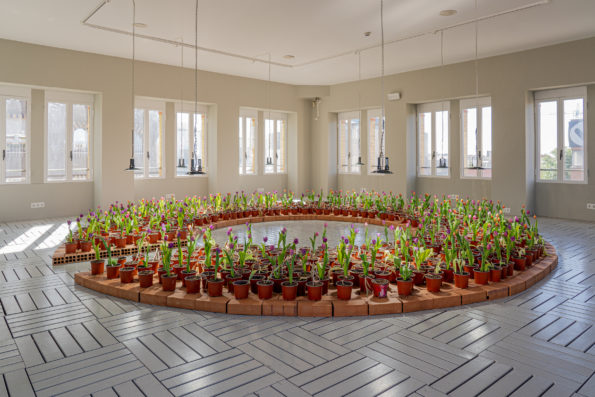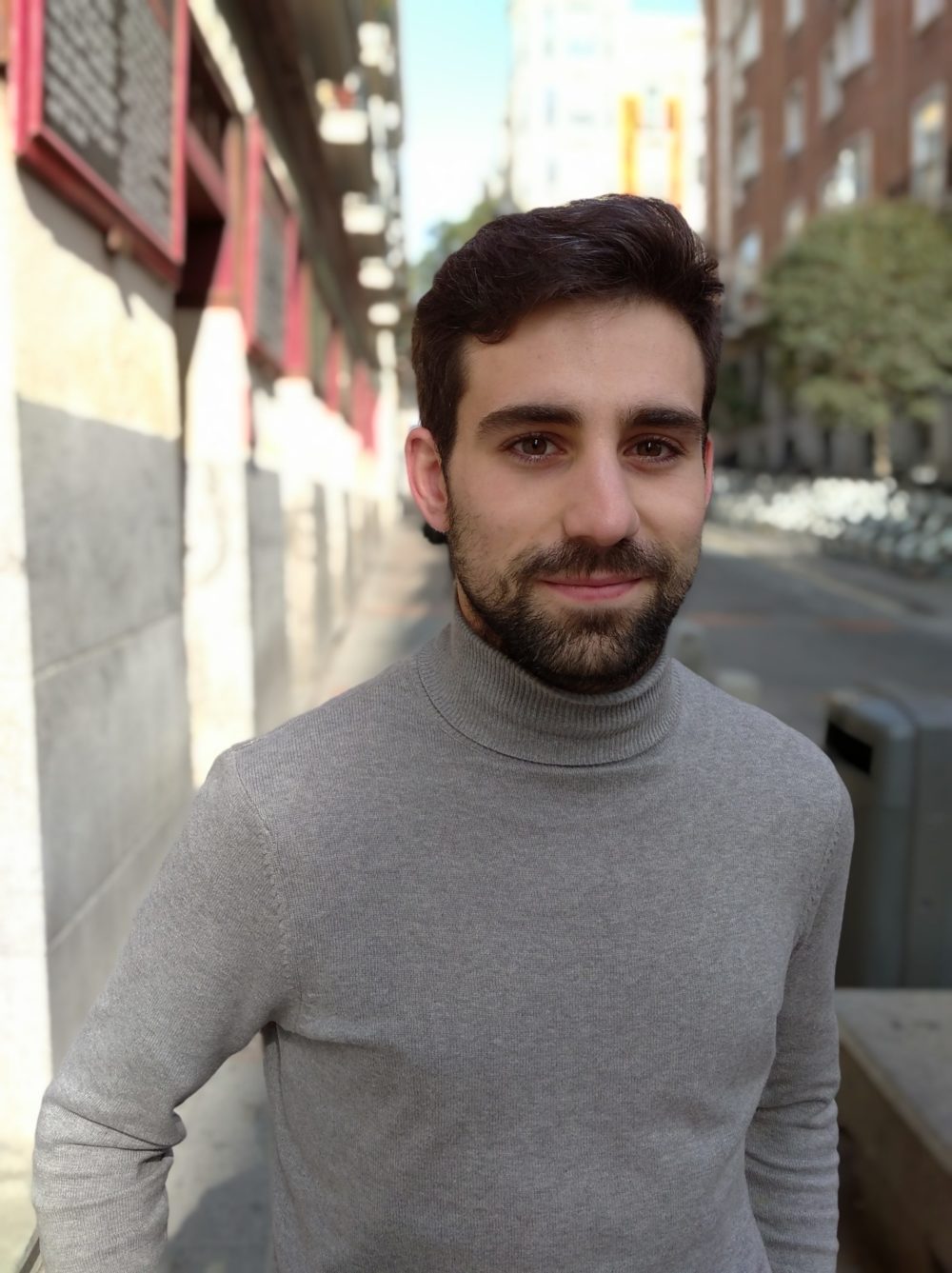Search
To search for an exact match, type the word or phrase you want in quotation marks.
A*DESK has been offering since 2002 contents about criticism and contemporary art. A*DESK has become consolidated thanks to all those who have believed in the project, all those who have followed us, debating, participating and collaborating. Many people have collaborated with A*DESK, and continue to do so. Their efforts, knowledge and belief in the project are what make it grow internationally. At A*DESK we have also generated work for over one hundred professionals in culture, from small collaborations with reviews and classes, to more prolonged and intense collaborations.
At A*DESK we believe in the need for free and universal access to culture and knowledge. We want to carry on being independent, remaining open to more ideas and opinions. If you believe in A*DESK, we need your backing to be able to continue. You can now participate in the project by supporting it. You can choose how much you want to contribute to the project.
You can decide how much you want to bring to the project.

Despite the proliferation of concepts such as vulnerability, precariousness or fragility in a multitude of contemporary political and artistic debates (from Judith Butler to Élisabeth Lebovici, from Remedios Zafra to Achille Mbembe), the spaces we inhabit do not allow vulnerable bodies to meet, to cooperate, to become infected. In CRIATURAS VULNERABLES, the exhibition at La Casa Encendida that follows the project inaugurated at a series of meetings in Lisbon last year, curators Andrea Bagnato and Iván L. Munuera seek to imagine those spaces through a show that puts many contradictions to the test, while at the same time confronting the fundamental problem of the representation of vulnerability in art. Through works already produced and others conceived for the exhibition, ten artists evaluate these meanings and confront the implications of illness and its political possibilities.
In a vindication of the most relevant contributions to the investigation of the infected and the excluded, the presence of Pepe Espaliú’s masks and drawings in the exhibition marks the fundamental shift in the attention to the disease since the HIV/AIDS epidemic. The so-called “epidemic of meaning” that shattered relations with bodies at a time of optimism and further stigmatized the most fragile communities on the planet also served for the production of new visions on the common, the everyday and the forms of experience in the disease. The sick body ceased to be a period to become a mode of social organization, a form of repression of difference and, also, artistic practices that had to be decided in the common and in the renewed political. The elegant leather masks, arranged around the room on stands or directly on the floor in series, replicate this dual phenomenon between visibility and concealment, with forms that recreate the face and the seat in almost interchangeable terms. The diptych Cannibale/Vive papa combines the most common obsessions of the Cordovan artist with a very fine finish that will be one of the hallmarks of the other works on display.

Work by Pepe Espaliu in the exhibition “Criaturas vulnerables”. Image courtesy of La Casa Encendida, Galerna, 2022
Historical metaphors of infection run through the exhibition and form the backbone of it, as is the case of P. Staff’s Common cup, a cup tied to chains that recalls the urban drinking fountains built to prevent cholera epidemics in the United Kingdom in the 19th century and racial segregation in the United States, which differentiated the common uses of water by race. Michael Wang also draws on purity regulations, in his case of tulips: more than six hundred “purebred” bulbs are planted in the tower of La Casa Encendida, alongside six hundred infected by the tulip mosaic virus, which causes the petals to bloom bright red. The government of the Netherlands prohibits the cultivation of species infected by the virus, for fear of contagion, in a measure of epidemic control that reverberates strongly on our own schemes of the disease and its regulations. It is inevitable to reflect at this point on how metaphor fits with our structures, arranges itself for them, and on how human definitions of the healthy and the sick affect other beings, beyond our perspectives on beauty. Perhaps the most radical thing about Contagion Garden is precisely the beauty of the diseased tulips.
Much closer to our danger zone is Pratchaya Phinthong’s multidisciplinary work Tsetse Eradication Campaign, an art project that originated in dOCUMENTA (13). Two tsetse flies “slept” in a showcase, allowing visitors to observe the cause of death of thousands of people in sub-Saharan Africa without access to quality public health care. At the same time, one of the hundreds of traps built by the artist seeks a method of eradicating the pandemic that does not involve the ecological disaster of ionizing radiation, the method of control used in places like Zambia or Ethiopia. A video raising awareness of the dangers of tsetse flies, based on a thirty-year-old documentary, removes the images, but leaves subtitles and sound. As a whole, the work recovers the political conditions of vulnerability and its definition irremediably anchored in historical and geopolitical inequalities. Disease and death, also in the case of flies, is a circumstance of coloniality.
These meanings are less successfully developed in the installations of the studios C+arquitectas and all(zone), despite their topicality -both speak of the coronavirus pandemic- they are relatively incapable of enunciating themselves from vulnerability and fall into a discourse of architectural planning and control of the meaning of the fragile. All(zone), perhaps more successfully for its pragmatic zeal, shows a 1:1 scale model of a dwelling, designed for Bangkok, that facilitates ventilation and uses the colonial veranda to facilitate communal living. Without questioning its practicality, the result looks very much like a flow control device, in a sort of normative model of everyday behavior at the height of the pandemic two years ago. Less aggressive, perhaps because of its speculative interest, and closer to the curators’ notions of vulnerability, the installation by C+arquitectas (Nerea Calvillo and Manuel Alba Montes) investigates the social distance in an air that has ceased to be transparent to become a visible substance that this studio recreates through foam machines. However, the installation, even involuntarily, ends up summarizing itself in an excessive interest in the spectacular nature of visibilization, that is, in the demiurgic action of the architects, which allows visitors to see what they did not see before, as the installation implies. Nor does the fact that the foam propelled by cannons triggered from time to time, a mass of air made visible, is enclosed in transparent panels allow vulnerability to be shared, nor does its mere observation allow the danger to pass through -as the flies in the showcase, for example, do-; it remains outside us, controlled by others, without the possibility of compassion.
Finally, vulnerability is often neither a state of the body nor a circumstance or situation, but structures the material conditions of living beings. However, its ubiquity is parallel to its invisibilization. The fragile self is, in some complex way, eliminated in our view of the world. We do not see the bodies that surround us and that are precariously sustained in the world. We do not see not only because we do not want to see, as a quick moralistic judgment might suppose, but because in our visual memory the suffering of others has disappeared. The demand for its purity, its uncontamination, as well as the rejection of the infectious, the disorderly or the denaturalized, which cements the norms of power and also those of art, have been able to build an excluding visual regime. To destroy that regime or, at least, to put it to the test, should be the main objective of curators who intend to uncover vulnerability, to expose it in its most classic sense, to stir up its disorders and present them. Unexpectedly, the greatest disorder in this sense is caused not by the human body, the protagonist of the exhibition as opposed to all other possible bodies, but by a talking mountain, the Nanda Devi in the Himalayas, and a nuclear device installed by the United States there in 1965. This device, now in disuse and the probable cause of the high radiation in the area, serves to sustain an epistolary with the Nanda Devi in which they explore, through sound and altered images, not only the question of infection and disease, but also the productive and traveling capacity of contaminations. It is curious and beautiful that a contemporary exhibition, that realm of the visual-regulated, errs in the planning of habitability and triumphs in the words that remain when the mountains are barred to passage:
“they have blown strong winds, transporting you. i sense you near. I have always marveled at the weight that carries the air around the world. an atom from north to south. we all carry others who cannot know each other. maybe that’s how time works too: a single instant from long ago can suddenly reappear, now.”
Excerpt from An Affirmation, by Himali Singh Soin
(Featured Image: Michael Wang, Contagion garden, 2022. Fotografía cortesía de La Casa Encendida, Galerna, 2022).

Juan Gallego Benot (1997) researches on Rhetoric and Modernity at the Autonomous University of Madrid and the University of Groningen. He is also studying Art History at the UNED and has published the book of poems Oración en el huerto (Tino Barriuso Prize, Hiperión, 2020). He is currently writing a second book on contemporary urbanism, expulsion and gentrification in the city of Seville.
"A desk is a dangerous place from which to watch the world" (John Le Carré)